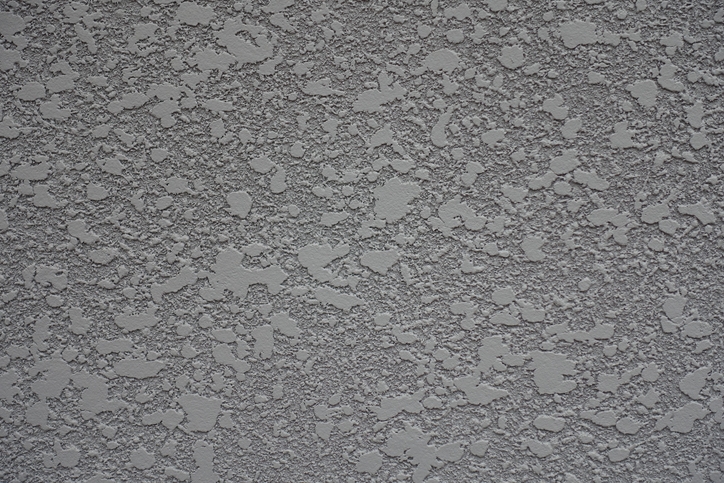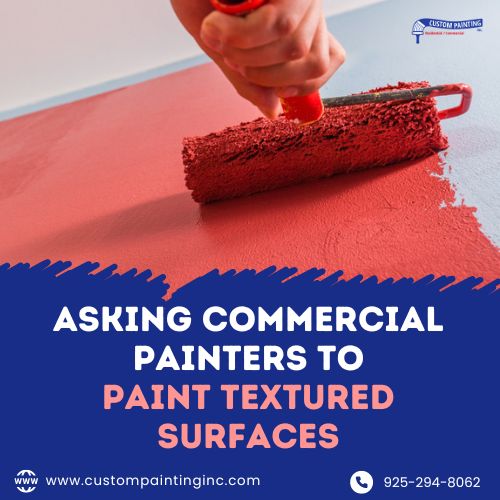Many commercial properties feature flat and smooth walls and ceilings, as they are the standard and more practical for painting. However, textured surfaces are becoming increasingly popular for their aesthetic and practical benefits.
Companies looking to incorporate textured surfaces should consider hiring professional commercial painters. These experts have the experience, skills, and artistic flair needed to apply paint to textured surfaces, ensuring a high-quality finish that enhances the visual appeal and functionality of commercial spaces. Give your building a fresh, lasting look with expert exterior painting services designed for Bay Area businesses.
Benefits of Textured Surfaces
Why would any business owner want textured surfaces for their walls? Here are the reasons:
1. It creates visual interest and appeal
A single textured accent wall in a foyer or boardroom can immediately capture the attention of employees and clients. Textured finishes, such as stucco, create a rough masonry profile that is both visually attractive and provides a sense of balance.
2. It enhances depth and luxury
Adding texture to surfaces creates depth and enhances the overall beauty of the space. Even basic paint colors gain a “wow” factor with raised textures, making surfaces appear more luxurious.
3. It offers practical benefits
From a practical standpoint, textured surfaces help hide imperfections like cracks and holes, which is ideal for high-traffic areas such as hallways or patios. They are generally more durable and require less maintenance compared to smooth surfaces.
4. It hides flaws in the walls and ceiling
One of the practical benefits of textured surfaces is their ability to hide imperfections such as cracks, holes, and other minor flaws. This makes textured finishes ideal for high-traffic areas like hallways and patios, where walls and ceilings are more likely to suffer wear and tear. By hiding these imperfections, textured surfaces can help keep your surfaces looking pristine with less frequent maintenance.
5. It doubles as a soundproofing material
An additional, somewhat surprising benefit of textured surfaces is their soundproofing capability. Textures can help insulate against noise from adjacent rooms or tenants, which creates a more peaceful environment for clients and employees.

Essential Questions to Ask Potential Painters
When considering commercial painters for painting your textured wall, here are good questions to ask them so you can gauge whether or not they are the right contractor for your project:
1. “How much experience do you have with textured painting?”
When hiring a painter for textured surfaces, it’s crucial to ensure they have specific experience in this area. Ask them to show you examples of textured projects they have completed. You can also review their portfolio to understand their expertise and ability to handle your project clearly.
2. “What techniques do you use for applying textures?”
Painters use different techniques and materials to achieve various textured effects. It’s important to understand what your painter plans to use. Discussing popular techniques like skip trowel, swirling, knockdown, and spray sand can help you determine the best approach for your space. You can also ask what materials or granular paints they recommend.
3. “What is your approach to planning and executing a textured painting project?”
It’s important to understand the painter’s approach to planning and executing the project. Ask them how they can ensure the quality and durability of the texture. A detailed project plan and a focus on quality assurance can help ensure your project runs smoothly.
4. “Can you provide references from past clients?”
Ask for references so you can hear from previous clients. They can provide valuable insights into the painter’s reliability and quality of work. If you get positive feedback and testimonials, you can be confident in your choice of painter.
5. “What is the estimated cost?”
Finally, ensure you get a clear and detailed estimate and understand what the contract covers. Know how much you are expected to spend to avoid unwanted surprises.
Techniques for Applying Textured Paint
These are the usual techniques applied by painters when making texture for surfaces:
1. Skip Trowel
The skip trowel technique involves applying a thin layer of joint compound or plaster in a random, overlapping pattern. This creates a subtle, elegant texture that can add depth and interest to walls and ceilings. It’s ideal for creating a sophisticated, understated look.
2. Swirling
Swirling involves applying a thin plaster or joint compound coat and then using a brush or trowel to create circular patterns. This technique perfectly adds a dynamic, artistic flair to a room. It works well in spaces where you want to make a bold, creative statement.
3. Knockdown
The knockdown technique starts by spraying or troweling the joint compound onto the surface and then lightly flattening the peaks with a trowel or knockdown knife. This results in a unique, attractive, durable, textured finish. Due to its resilience and visual appeal, it’s commonly used in high-traffic areas.
4. Spray Sand
Spray sand involves mixing sand with paint or primer and then spraying it onto the surface with a hopper gun. This technique creates a rough, grainy texture that adds visual interest and can hide imperfections. It’s an excellent choice for creating a rustic, natural look.

How to Prepare for a Textured Painting Project
When having a painting project scheduled, start with a comprehensive consultation with your painter. Discuss your goals, preferences, and any specific requirements. Share your vision for the project and get expert advice on the best techniques and materials to achieve the desired texture. After consultation, here’s what you need to do:
1. Prepare the surface.
Proper surface preparation is crucial for a successful textured painting project. Here’s how to get started:
- Cleaning: Ensure all surfaces are clean and free of dust, grease, and debris. A clean surface allows the texture to adhere better.
- Priming: Apply a primer suitable for textured finishes. This step creates a smooth base for the texture and enhances paint durability. Ask your painter for recommendations on the best primer for your specific needs.
2. Coordinate and schedule.
Efficient coordination and scheduling can minimize disruptions and ensure a smooth process. Work with your painter to establish a realistic timeline that fits your business operations. This helps avoid delays and keeps the project on track.
Keep clear and open communication with your painting team. Regular updates on progress and any potential issues will help ensure the project runs smoothly.
Conclusion
If you want to enhance the look and functionality of your commercial space, consider adding some texture. Besides visual appeal, it can also offer practical benefits.
When hiring a commercial painter for your textured surfaces, it’s essential to ask the right questions, understand their techniques, and properly prepare your space. If you need help, Bay Area Custom Painting can help. We have the expertise to ensure your project is a success and deliver a beautiful, durable finish that transforms your space.
Serving the Bay area including the cities of Mountain View, Newark, Orinda, Pleasant Hill and Pleasanton. For more information or to get started, contact Bay Area Custom Painting today. Leave us a message or call us at 925-294-8062!

